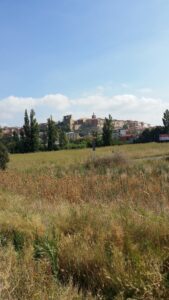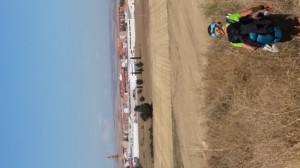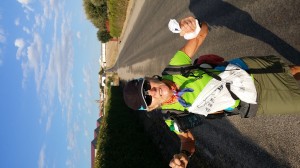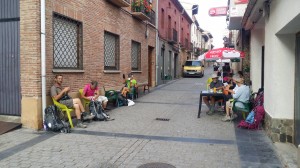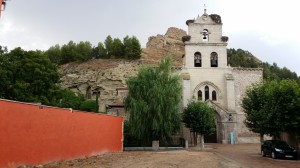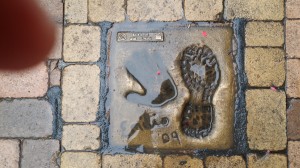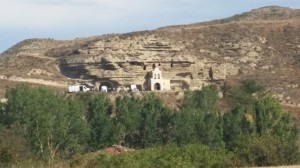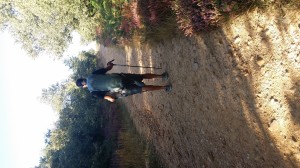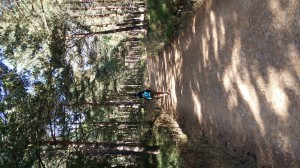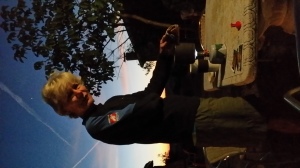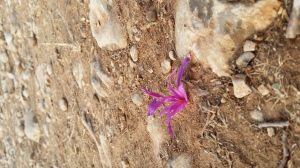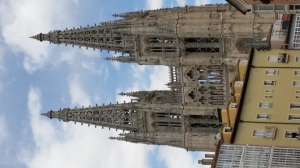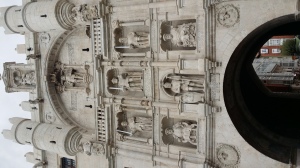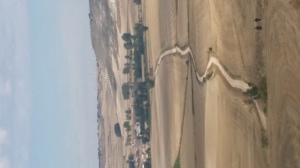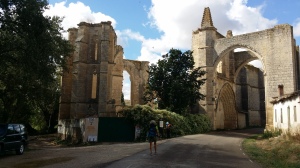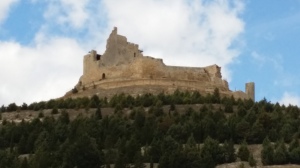At bit of trivia, first. At Los Arcos, we completed our first week on the Camino. 93 miles of walking, approximately 400 to go. The trip to Logrono was another 18 miles.
Okay, 18 miles to go today and the days have been pushing the high 80’s and low 90’s. Many of the Peregrinos figured to get an early start on this day. We certainly did!
We woke up at 6:00 and were on the road at 7:00. Now, at 7:00 it is just starting to get light, but we could make out the signs. Many Peregrinos started at 6:00 or 6:30 and used flashlights to make out the trail and the signs.
Where yesterday was the day of hay and vineyards, today was the day of races! In the village of Viana, they were holding a 10k race there. In Logrono, it was a triathlon!
Leaving as early as we did on a Sunday, there was no place for us to get a breakfast before starting. So, we ate a saved Clif bar and left. Fortunately, about 4 miles down the road we came to a village with a market open. We bought fruit, bread, cheese and some chocolate and dined “on the road”. Tasty!
By the time we hit Logrono 14 more miles down the road, we were looking at anything that might be edible …I had to keep my eyes on Diane!
Diane, on the trail to Logrono … safely ahead of me
We found a cafe in downtown Logrono and looked like castaways enjoying their first meal in weeks! We were famished!
With food in stomach, we searched out our hotel, found it, and found that it actually has a respectable Internet signal. Now, for the shower, the laundry, and a walk about town!
